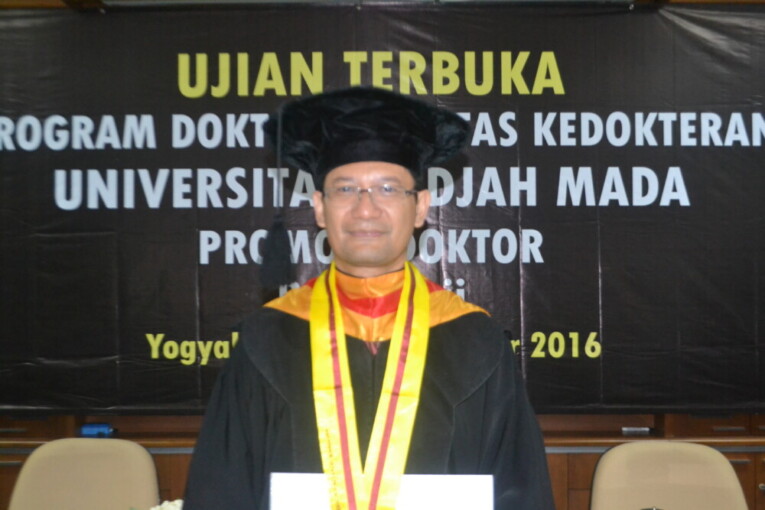
Use of morphines in Indonesia for health services is very low due to the unavailability of morphines at hospital and pharmacists. This is due to the fear of misuse and crime that can arise Support is, therefore, needed in medical prescription. “A special policy is required from the government for the increase in morphine use, particularly for patients with severe pain,” said Pharmacology lecturer from UGM, Dr. dr. Rustammaji, M.Kes., during his doctoral promotion at Faculty of Medicine UGM on Tuesday (27/9).
Based on the research done by Rustamaji, the use of morphine in Indonesia between years 2011-2013 was 400 mg per day per million of population per year. “This means that as low as 6% or 9,880 patients per day receive morphine therapy of all 162,000 patients with severe pain due to cancer and HIV. The figure is very low related to the use of morphines in Indonesia,” he explained.
He said in 2012, use of morphines decreased from 17 kg to 14 kg. In 2014 the use increased to 23 kg, which is still very low compared to the demands from severe pain patients because of cancer and HIV.
Despite the existing government regulation on narcotics use for health services, the fact is that these are still used minimally. He saw the government measures on access to morphines were good in terms of regulations, drugs selections and quality assurance, but in terms of supply management area it is still weak. So, socialisation of morphine use is required for severe pain, as well as administration of morphine prescription. “Efforts need to be made on morphine introduction related to the clinical benefits or side-effects risks, including the possibility for the emergence of tolerance,” he said.
To minimise the fear amongst doctors in prescribing the morphines, he suggested the government through the Health Ministry to organise training systematically for doctors, pharmacists, and medical associations on the availability of morphines and control of use. According to Rustamaji, this programme could be categorised into the palliative care programme in hospital.
“To repeat, strengthening of primary services doctors in prescribing morphines as anti-severe pain drugs is very much needed,” he said.
On the production issue, Rustam assessed that pharmaceutical industry would only produce morphine tablet unders assignment from the government and obtain profits of the production. The industry sector will produce the morphines if there is clear demand and with satisfactory absorption. “Intensive communication between hospitals and morphine producers is much needed so that the production of the pharmaceutical industry can be absorbed and used for severe pain treatment,” he concluded.


